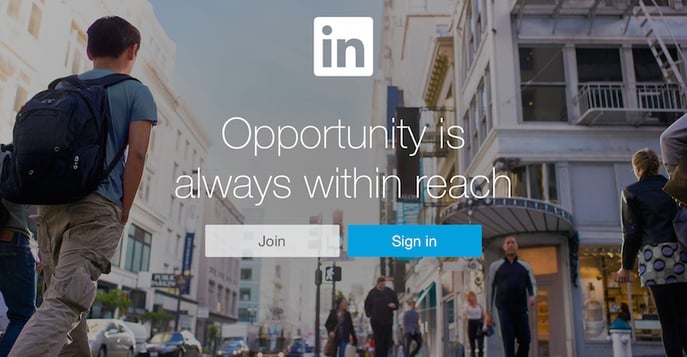
At Penguin Strategies, we’re big on B2B social media. So imagine our surprise and dismay when, starting around three months ago, we began to notice a marked decline in the performance of the LinkedIn posts we were publishing for our clients. Until then, LinkedIn had been our preferred and most effective channel for digital marketing and lead generation on social media.
At first, we thought that maybe it was just some strange and fleeting outlier, but as the same sluggish results poured in week after week across different accounts, the fact of a fundamental change became undeniable. There was no way around it, we had LinkedIn problems.
The Penguin team is not one to rest on its laurels so, after identifying the problem, we swung into action. First we wanted to see if this new LinkedIn reality was universal or somehow unique to us.
Never one to miss an opportunity for irony, my colleague, Ally Benoliel, posted to a content marketing group on LinkedIn, asking if other marketers had noticed the same phenomenon, how they explained it, and how they were compensating for it. We had our own notions of what lay at the root of the problem, but wanted to hear what other people were saying about it.
The Smoking Gun
Turns out that much of what other industry experts had surmised served to confirm our own suspicions. Chief among those suspicions was that LinkedIn groups had become overly saturated with self-promoting messages.
 Many of the people making up the membership of LinkedIn groups are only there to post messaging that directly benefits them. They don’t participate in conversations beyond their own posts and they don’t really look at what other people are saying.
Many of the people making up the membership of LinkedIn groups are only there to post messaging that directly benefits them. They don’t participate in conversations beyond their own posts and they don’t really look at what other people are saying.
A group of 20,000 may only have 7,000 “true members” there to expand their horizons and be a part of an industry community. Those “true members” are usually out-posted, if not altogether outnumbered - making the group an inhospitable environment for the sort of authentic information exchange and exploration to which it is ostensibly devoted.
What’s more, because of marketing automation platforms people aren’t even posting from within groups, where they would at least passively gain some basic familiarity with the type and tone of messages befitting the audience. Instead they grow increasingly out-of-touch and post messaging less relevant to the interests of the "true" group members.
As a group page is filled with these sorts of messages, it becomes less worthwhile to its core of “true members” and engagement naturally plummets. Marie-Helene Dibenedetto put it nicely when she wrote, “[M]ost LI groups are turning into massive auto-promotion and spam places, no wonder activity is getting down. They're not really about giving value anymore.”
Ally also noted that coinciding with this general degradation of LinkedIn groups, LinkedIn made some changes to its platform that may have exacerbated the problem. In stages beginning on February 18, 2015, LinkedIn undertook to remove the Top Contributors feature from group pages.
While groups may have been abused by marketers in any case, the Top Contributors feature had the ability to at least rein in the chaos, giving members a powerful incentive to play nice and participate in conversations beyond those of their own making.
Without all those glorious, status-enhancing internet points on the line, there’s nothing stopping social freeriding marketers from drive-by spammings.
The Other Suspects
It was also suggested that summer was a significant factor in the downturn. While the lull of the summer months is certainly a factor, the unprecedented and sustained extent of the downturn makes summer a wholly inadequate explanation.
The other intriguing possibility, raised by Mike Deuerling, is that LinkedIn is the Detroit of social media.
What does that mean? Well, Detroit was a city built as the engine for an industrial boom that helped shape the modern world. Only the boom was neither static nor sustained. The competition stiffened, the industry changed and people began moving in different directions.
In the end, a city built for two million is today home to 680,000. What resulted from the shrinkage was mass infrastructural abandonment and neglect. The preferred term is “urban decay.” On the edges of the city’s population centers, graffiti litters the landscape and standard norms are replaced with an eccentric sort of dead-zone culture.

Mike suggested that, as a result of Twitter’s ever-improving professional utility, LinkedIn groups have fallen victim to “digital decay.” With the most engaged elements of groups moving to spend more time and expend more of their energies on Twitter, LinkedIn groups have become a sort of nomadic wasteland, inhabited by social media marketing transients.
I can’t say for sure whether Mike is right or not, but it’s certainly a captivating thought. In our own experience at Penguin Strategies, we have found that Twitter has really upped their game and become an increasingly powerful vehicle for business.
In fact, concurrent with the decline in performance of LinkedIn groups, we noticed improved performance from our Twitter accounts. Does the rise of one social media behemoth necessarily contribute to the partial fall of another? I’ll let you decide. But for what it’s worth, I think Mike is on to something.
The Way Forward
With Twitter making up for most of our lost LinkedIn traction, you might ask why we care. Well, the reason is simple. We have no interest in becoming a one-trick pony - or penguin as the case so happens - and we subscribe the proverbial wisdom warning against putting all our eggs in one basket.
So where do we go from here? Here are some suggestions for how you can coax better results out of your LinkedIn group posts:
1. Be selective and attentive in picking your groups
This is one of the easiest ways to shore up your LinkedIn group performance. Many people will join and post to any group with a lot of members and a name somewhat related to their target market. That’s a big mistake. A little extra time spent on due diligence now will pay a lot of dividends in the future.
It’s not enough for a LinkedIn group to have a lot of members, a good group will also have a lot of active discussions. Go into the group, measure the cadence of posts, and how much interaction those posts typically generate. This will tell you if the group is worth your time.
If it is, then write yourself a note indicating how frequently you should be posting to this group. If the group usually hosts 10 posts in a day, posting twice a day - or even every day - is probably too much.

Similarly, you want to join groups that are directly relevant to you and your target market. Vaguely relevant is not relevant enough. The easiest messages for people to ignore are those that do not match the group’s expressed purpose but include a relevant buzzword. People hate when you do that. I hate when you do that.
Another thing, not often considered, is geography. Aside from geographically-specific nuances in interest and/or language preferences, knowing the geographical makeup of a given group is hugely important to knowing when to post.
If 70% of a group’s members are from LA, then you can be sure that a message posted at 9:00AM EST is a wasted opportunity.
Here’s a little trick to use when you’re building or refreshing your groups list:
Once you’ve identified a group of interest, type “https://www.linkedin.com/groups?groupDashboard=&gid=GroupID” into the address bar and replace “GroupID” with the group ID (the number that follows “gid=” in the group’s URL address.)
After pressing enter, you’ll be directed to a page displaying different stats on the group. Those stats include the number of comments in the last week, the largest single geographical location of group members, the industry, job function, and professional seniority of members.
You can also see charts depicting whether the rate of group activity is trending up or down.
2. Analyze and refine your methods regularly
Pilots don’t fly planes with blindfolds on. There’s a good reason for that. They process incoming data through visual feedback and coordinate their mechanical actions in response to that visual feedback.
In the case of an ace pilot, that process occurs so quickly and seamlessly that it is nearly invisible. But visible or not, it’s absolutely crucial to their success.
It’s the same principle in Marketing. To be an ace, a marketer needs to be constantly take in and process data to make subtle tweaks and adjustments to his or her regular activities.
At Penguin Strategies, the way we go about that feedback and refinement loop is through a monthly analysis we run across all our accounts. In so doing, we look at the day of the week, the time of day, the character count, the group posted to, the account posted from, the subject, the tone, the terminology, and the punctuation of our best and worst performing posts.
This takes a lot of time and effort and is distinctly “unsexy,” but at the end of the day there is no denying that data drives performance. If you know what’s working, you know what to emulate, and if you know what’s not working, you know what to avoid. If you know neither of those things, you’re flying blind.
3. Participate and play nice
Ultimately any functional community is built on two things: shared interests and basic trust. Without that underlying baseline of trust, you can’t rely on people to fairly advance your shared interests.
A LinkedIn group is essentially a virtual community and everyone involved has interests. Whether its simply to learn and expand your expertise or to get people to notice your awesome product or service, there is overlap to be found if you’re willing to look.
Find that overlap and exploit it. Engaging within the range of overlap should make up the bulk of you LinkedIn group activities. The more you help other community members advance their interests, the more credibility you gain. Essentially, it’s a matter of social proof. Let the words of Paul Williams guide you, “You give a little love and it will all come back to you.”
You need to engage with the LinkedIn community before asking it to engage with you. To do that, monitor the relevant groups for conversations on which you can provide useful input, having little or nothing directly to do with your own business interests.
Try to comment on other people’s posts a few times a week. Don’t force it though. If you’re comments read as vacuous drivel, it really defeats the purpose. The goal is to build veritable social capital.
If you regularly comment on the same person’s posts, you will no doubt get his or her attention, and he or she will definitely notice and be more likely to comment on your own posts. Pick this person according to his or her standing in the group, if he or she is someone who seems well-respected and who’s posts regularly generate traction – that’s your guy.

These cats know what's up. They have each other's back.
When you do post original messages – as opposed to commenting - you can’t just share articles from your company/client blog. When you link to company blogs, you’re essentially asking for something from your audience. Why would anyone oblige your request if you’ve given them no reason to associate you with anything other than a promotional mouthpiece for that company?
You need to build trust, authority and - perhaps most significantly - a personal brand through a community presence that is not merely solicitous.
A great and relatively easy way to expand a personal brand beyond its affiliated company is by sharing third-party content that’s of interest to the community members making up your audience.
As part of our regular marketing activities, we at Penguin Strategies comb the Internet for the best and most relevant third-party articles for each of our clients. We call this content curation. It’s a great way to demonstrate wherewithal, gain associative authority status, and break up what would otherwise be an onslaught of promotional content.
In the past we had limited the distribution of our curated content to Twitter, Facebook, and LinkedIn company pages. The thinking was that sharing this content to LinkedIn groups would take too much time and effort for an action that wouldn’t drive any traffic to our clients’ pages.
That was the thinking and it was true. But the game’s changed. And with LinkedIn groups no longer proving effective through a drive-by posting approach, a more grounded and well-rounded approach is in order.
Sharing curated content through LinkedIn groups is now a must. It can help you win points for relevance and interestingness and associate your personal brand with a voice that is both authoritative and unbiased.
Remember, “You give a little love and it will all come back to you.” Using this formula, you are much more likely to win people’s attention, trust, and clicks when you do post something from your client/company.
Keep at it and work hard at your craft. If your LinkedIn problems are in large part the collective result of socially irresponsible conduct from unscrupulous marketers, the answer can be found in restoring the balance. You and I have that power. Let’s restore the social contract and return reciprocity to the way we relate to LinkedIn group communities.
Do you suffer from LinkedIn problems? Do you have any suggestions or tips that we didn’t cover? Comment below.
_______

by The Penguin Team on September 10, 2015
As a leading B2B digital marketing agency, We help B2B Technology Companies, enterprise software, and hardware companies increase brand awareness, reach more qualified leads and close more customers. Penguin Strategies is a Diamond Partner of HubSpot.






